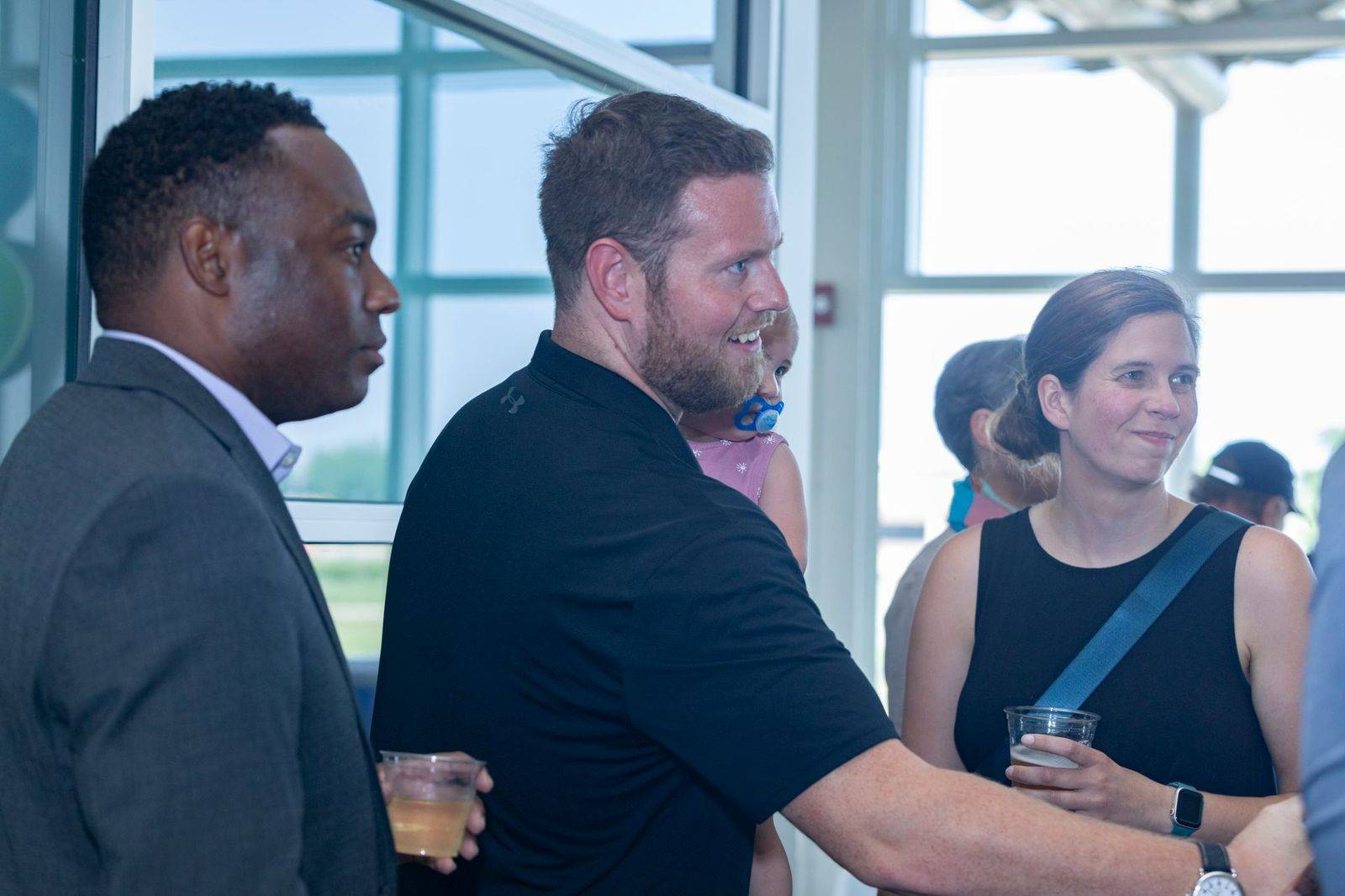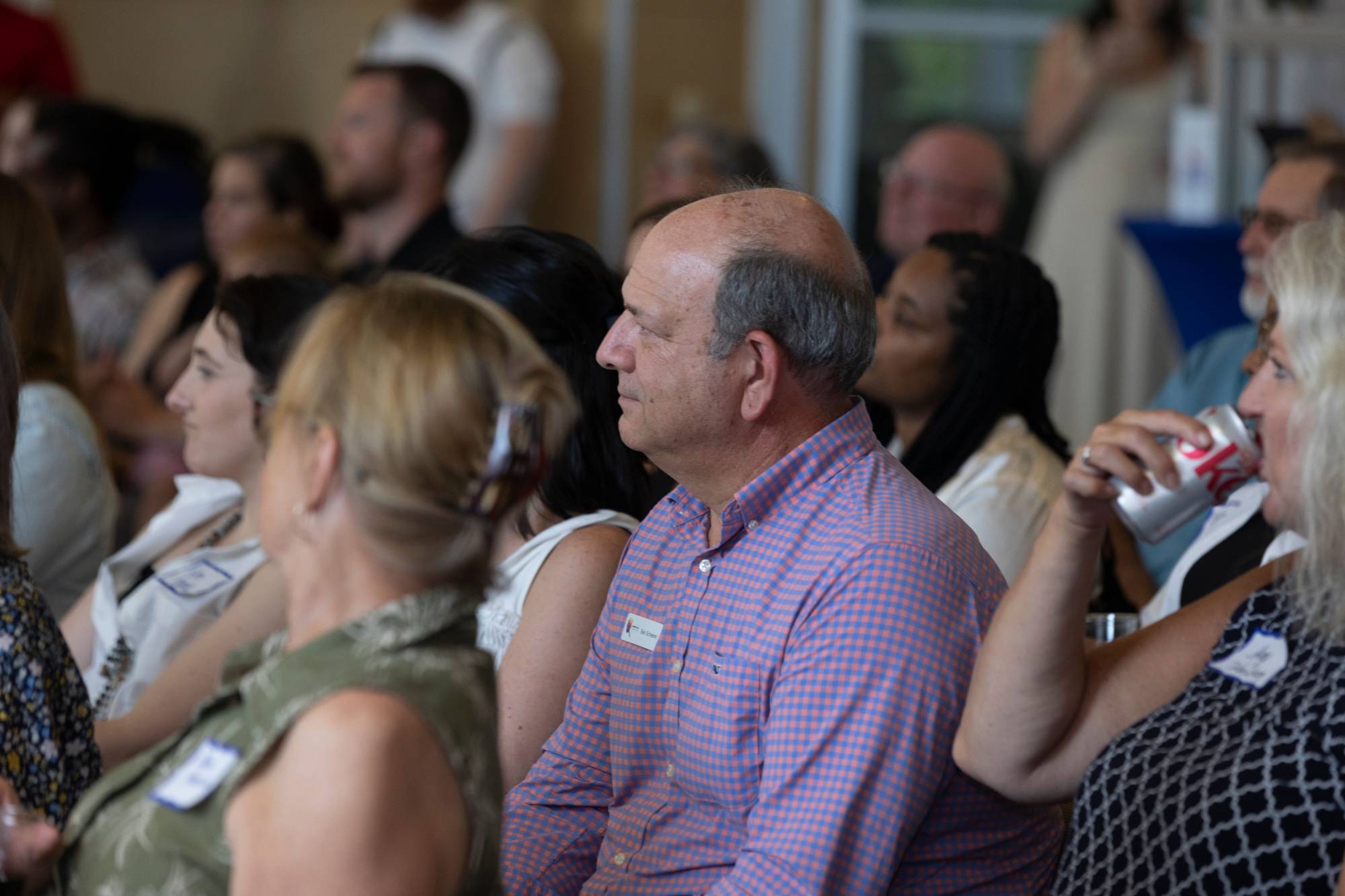2023 Lakeshore Innovator of the Year
WINNER- Lisa Spaugh of EZ Beach Steps
Since moving to her home alongside Lake Michigan in 1997, Lisa Spaugh has witnessed firsthand what nature can do to the shoreline.
In recent years, the lake has reclaimed much of the beachfront near her home. She said she watched as her staircase leading to the shoreline was swallowed by shifting sand.
“It became impossible to get to the beach,” Spaugh said. “You couldn’t invest any money because it would just get washed away. I knew there was a way, so I worked at it until I came up with the way.”
Spaugh’s innovative solution was EZ Beach Steps, an adjustable and adaptable set of stairs made of an aluminum alloy and covered by a PVC coating. The staircase is portable so homeowners can retract and store it during the winter.
If the shoreline changes due to high water or erosion, the homeowner can position the staircase to best suit the environment.
Spaugh said word has traveled quickly across West Michigan about her invention, and she recently shipped her first order to a customer living in Puget Sound, Washington.
“Innovation means not accepting what is,” Spaugh said. “Knowing that there’s a better way or a better process, going for it and being creative to come up with that better way.”



Finalists
Samantha Otto - The Woven Trifecta
On a parcel of land between Muskegon and Whitehall, Samantha Otto is making her vision come to life. Otto is the innovator behind The Woven Trifecta, “a balance of food, farm and education,” as she calls it.
First, there’s the Woven Farmstead which produces market crops that are certified naturally grown. The Woven Wellness offers in-person or online workshops to educate customers on the connections between food and wellness. And, the Woven Words is the social engagement piece, utilizing a blog, a podcast and speaking engagements to spread the Trifecta’s mission.
“It's really just taking things that I wasn't seeing within my community and adding them to it,” she said.
Otto said she had simple aspirations for the farm.
“My original dream was I wanted to grow flowers and be happy,” Otto said.
Founded in 2019, the farm began on a tenth of an acre. Four years later, it encompasses nearly two acres, and the surrounding communities are enthusiastically supporting the Trifecta.
“Each season more and more folks from the community pull in and it's like, ‘OK, people are into this, I've gotta keep growing,’” Otto said. “The way the community has supported me over the last four seasons has just been something of my wildest dreams.”

Mike Franzak - City of Muskegon

The City of Muskegon, like many communities across the state, is facing an affordable housing crisis.
As of the 2020 Census, three of the five fastest-growing counties are in West Michigan — Ottawa, Kent and Allegan. Under Mike Franzak’s leadership on the city’s development services team, Muskegon is looking to become a leader in the state on addressing the problem. Since 2019, Franzak’s team is utilizing a piece of state legislation addressing the development of brownfield areas. Muskegon has infilled more than 130 housing units, either for sale or for rent on city-owned vacant lots. Muskegon is also marketing new construction homes for less than $170,000. “Housing is a big need in our city right now,” Franzak said. “We’re short about 3,000 housing units over the next five years, and we’ve been going full speed for the past couple of years, constructing homes. “It’s really needed in the city, and we think we’re doing a good job progressing towards that goal in mind.” Franzak said Muskegon is the first city in the state to try this venture and get people and families into housing. “We think we’re being pretty innovative with this brownfield redevelopment plan,” Franzak said. “Through this redevelopment plan, we’re able to get those funds paid back over the next 30 years through the increments in taxes.”
Erin Peyer - Arts Council of White Lake
For nearly 40 years, the Arts Council of White Lake has anchored a vibrant arts scene for the cities of Whitehall and Montague. Executive Director Erin Peyer continues the council’s strong tradition introducing innovative programs to keep her patrons engaged.
Peyer said she’s well aware that the robust support the council receives is rare for smaller communities like Whitehall, Montague and their surrounding areas.
“I feel really lucky,” Peyer said. “What we’re able to provide to the community is pretty unique. It’s not something that you can really find in some larger cities right now.”
In 2020, Peyer established a residency for emerging young artists of color. Artists between the ages of 17-21 are paired with a local artist of color who acts as a mentor and guides them through their emerging career.
Peyer also teaches Music Together, a music and movement class with an international curriculum for children ages five and younger and their caregivers. Peyer said the class introduces the council to a younger audience and expands its program beyond visual arts.
“For us at the Arts Council, innovation happens in really small moments,” Peyer said. “We’re a nonprofit, so change can be very, very slow and gradual.
“We’re constantly trying to improve things and innovate in small ways, and then hopefully, those build up to some bigger changes.”

Leo McCormick, Sean McManus & Tom Michalak - Grand Valley State University

An invention by a Grand Valley team of engineers is helping the university become more energy efficient.
Leo McCormick, Sean McManus and Tom Michalak on GVSU's Facilities Service Energy Engineering Team devised advanced sensor technology for the university’s heating, ventilating and cooling systems which they estimate results in 25 percent energy savings per building.
“We wanted to reduce the energy bill, and Grand Valley was all about it,” McCormick said.
“What we encountered years ago was that a lot of our rooms were being over ventilated. A lot of rooms had more or less people in them than they were designed for. So we would end up drawing more fresh air into the space than required by occupancy.”
Normally, HVAC systems cycle heated or cooled air through a room based on a thermostat reading. However, in rooms controlled by a thermostat, the outside air needs to be heated or cooled to bring it to room temperature, McCormick said.
The trio’s technology, called CO2 Hound, improves the system’s performance and efficiency by also measuring the amount of carbon dioxide in the air being returned to the system. This way, if air quality is at an acceptable level, CO2 Hound can tell the HVAC system to recirculate the air back into the room, rather than use energy to heat or cool outside air.
“It all comes down to saving the university money and having students sit in a room and not freeze,” McCormick said.

